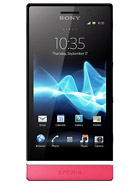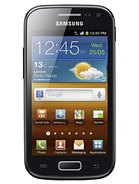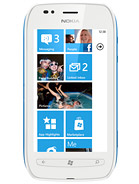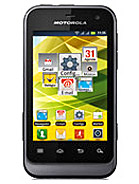HTC Desire C review: Welcome aboard
Welcome aboard
Final words
HTC has stepped out of its comfort zone with this one. It's not their first attempt at a smartphone for the masses and the Taiwanese are definitely getting the hang of it. The Desire C is firmly in the tradition of the two Wildfires and the Explorer. By another tradition honored by HTC, even their entry level offerings get the latest software and the combination of Ice Cream Sandwich and Sense 4.0 is the phone's key selling point.
What we have here is a trimmed-down version of the Sense UI but it's by no means a massive deal-breaker. After all, even the HTC One V had to accept cuts like the missing leap view and the non-customizable lockscreen. Anyway, with microSD card support, flash playback and ICS, the Desire C is a pretty good catch.
The flipside is, the hardware doesn't quite keep up. It's actually as low-end as it gets. But it suffices for two things - run Ice Cream Sandwich glitch-free and stay within budget. The Desire C is clearly cheaper than some of its direct competitors and that's fairly surprising coming from HTC, which usually prices its phones quite steep. The premium is well worth it most of the time, considering the solid build quality of the gadgets.
The Desire C will not let anyone down in terms of build and finish but it should take account of the fact that the market has evolved to a point where dual-cores are calling the shots in the midrange.
Of course, HTC will tell you it has the One V in the market of the affordable dual-core droids and their Desire C is targeting a different, lower segment. We don't think anyone will disagree but still, a certain Sony Xperia U is priced unsettlingly close.
For a couple of euros more (less than 20 really) you get incomparably more processing power thanks to the two 1GHz cores of the Xperia U's NovaThor chipset. The screen size is the same but with FWVGA resolution Sony's smartphone makes all the difference. The auto-focus still camera and HD videos are important advantages too. We like the glowing strip that matches the screen color too. Overall, we would've told you right away that your money is better spent on an Xperia U, was it not for its limited storage capacity.
The Samsung Galaxy Ace 2 is another recent dual-core droid, which raises the bid with a bigger screen, an autofocus camera and 720p videos. The memory card slot is a massive advantage over the Xperia U and the traditionally solid video codec support should count too. The Galaxy Ace 2 is still running Gingerbread and is even more expensive, and that's something for the Desire C to build on.
The LG Optimus L5 too fetches a slightly higher price than the Desire C. It has the same Snapdragon chipset but the processor is clocked higher at 800MHz. It comes with ICS right out of the box. An autofocus camera and the slim, Prada-influenced design are its highlights. The LG Optimus L5 has a big 4" screen but we're not sure whether we can actually call it an advantage at the same HVGA resolution as the Desire C.
As for the few options that currently cost less, the Lumia 710 still has a good run ahead of it, regardless of the fact that it's not getting Windows Phone 8. With WP 7.8 confirmed and the good package of apps (Nokia Drive adds quite a lot of value to the deal), the Lumia 710 is still a solid option in the lower midrange. It beats the Desire C with a bigger and higher resolution display, an autofocus camera, and a clearly more capable processor. The limited storage capacity and an app market that's not nearly as well-stocked as the Google Play store are points against.
Back to the Android camp, the Defy Mini is a pretty close match - it has the same processor as the HTC Desire C and almost identical looks. The screen is smaller, the camera is 3MP and there's still no ICS - but it costs less and is dust and water-resistant.
To sum it up, HTC seems to be taking the entry-level market more seriously than usual. Just look at the multiple versions of the Desire C, including dual-SIM support. Of course, HTC's entry level is different than say, Samsung's. What we mean is, there're obviously cheaper ways to own an Android smartphone. But the HTC Desire C is among the few to give you ICS right out of the box. It looks good and is really comfortable to handle - clearly, it's an easy phone to like.
Maybe it would be a lot harder for many people to forgive the slow, outdated processor. To be clear, most people won't call the Desire C slow, unless they're holding a dual-core in the other hand. That's the thing, though - the other hand.
Reader comments
- arsi
- 25 Dec 2014
- 3SM
Love this phone. I am using this phone as a second phone but this phone never let me down.
- Anonymous
- 08 Oct 2014
- v0q
H! Im leo from phils.and im the one fans of htc I wish this company to create again a small screen like 3.5inch 7mm thin a quadcore procesor and latest android version and a clear camera ang clear audio because I believe that many people like a small...
- Anonymous
- 08 Oct 2014
- v0q
I want htc




